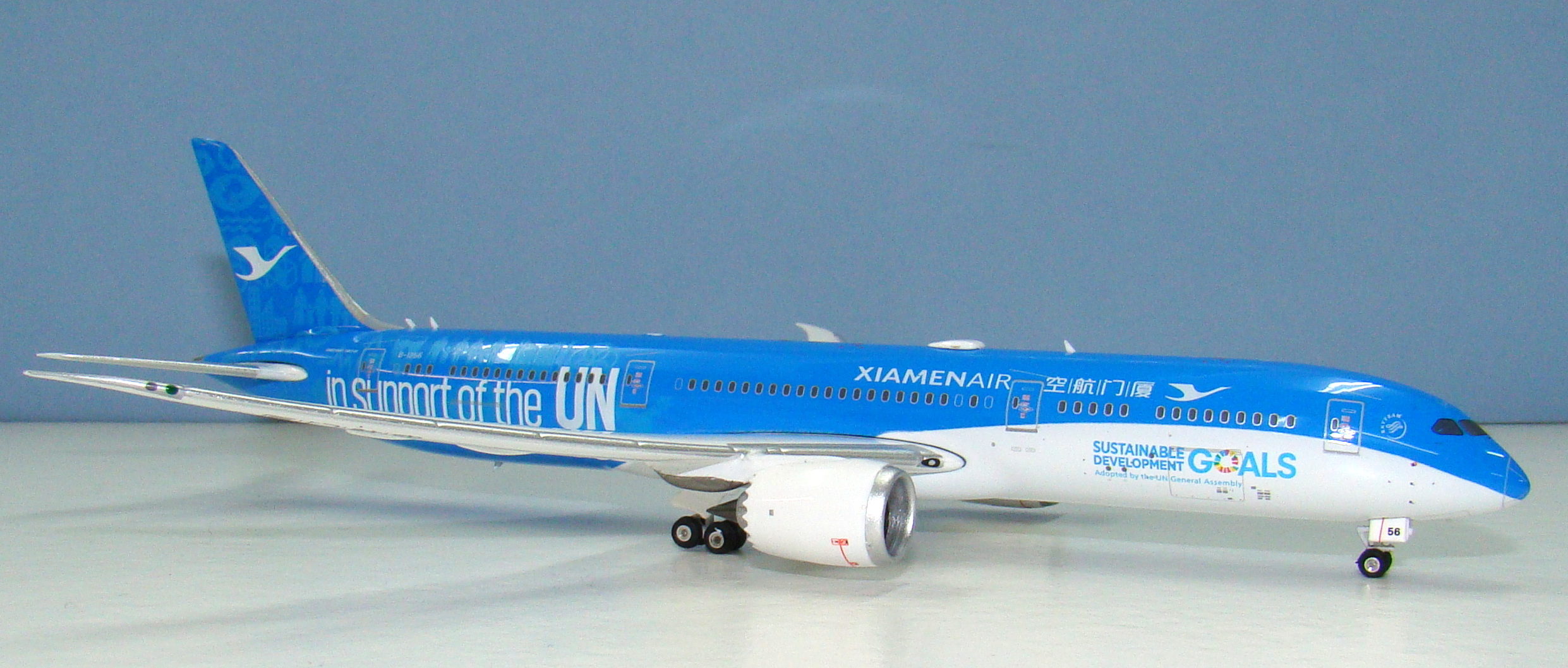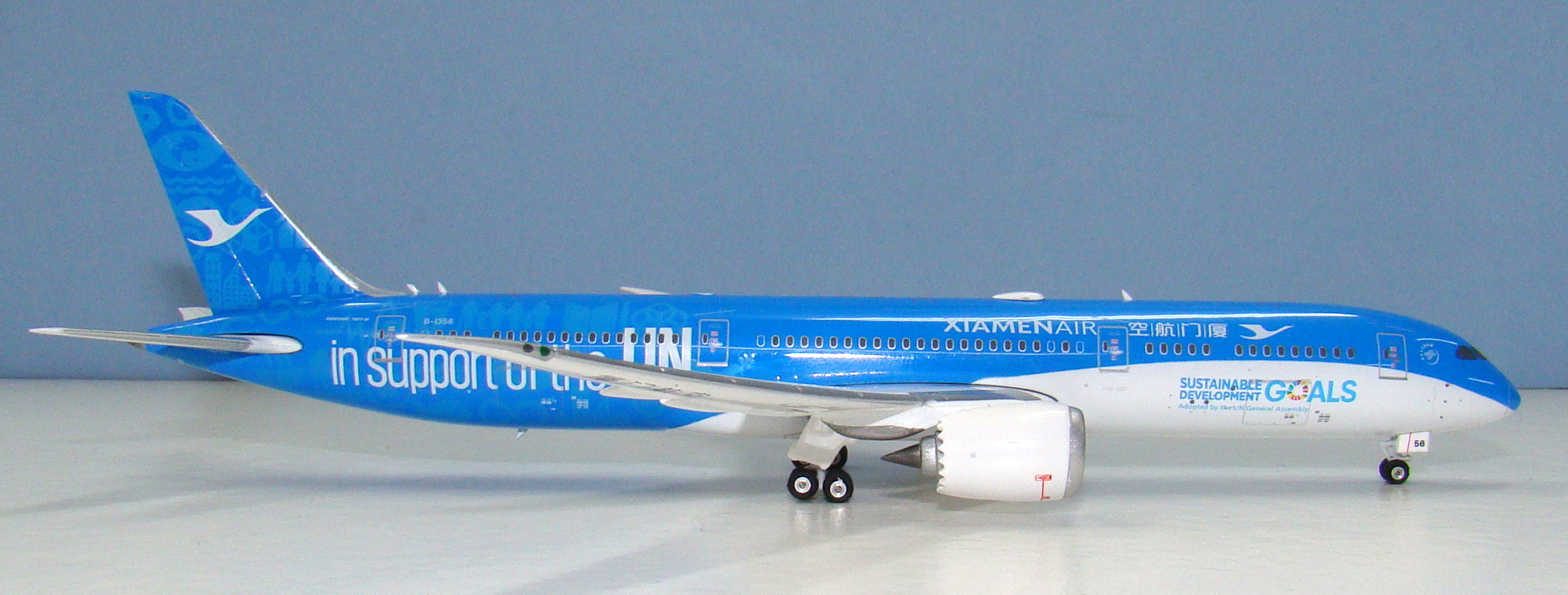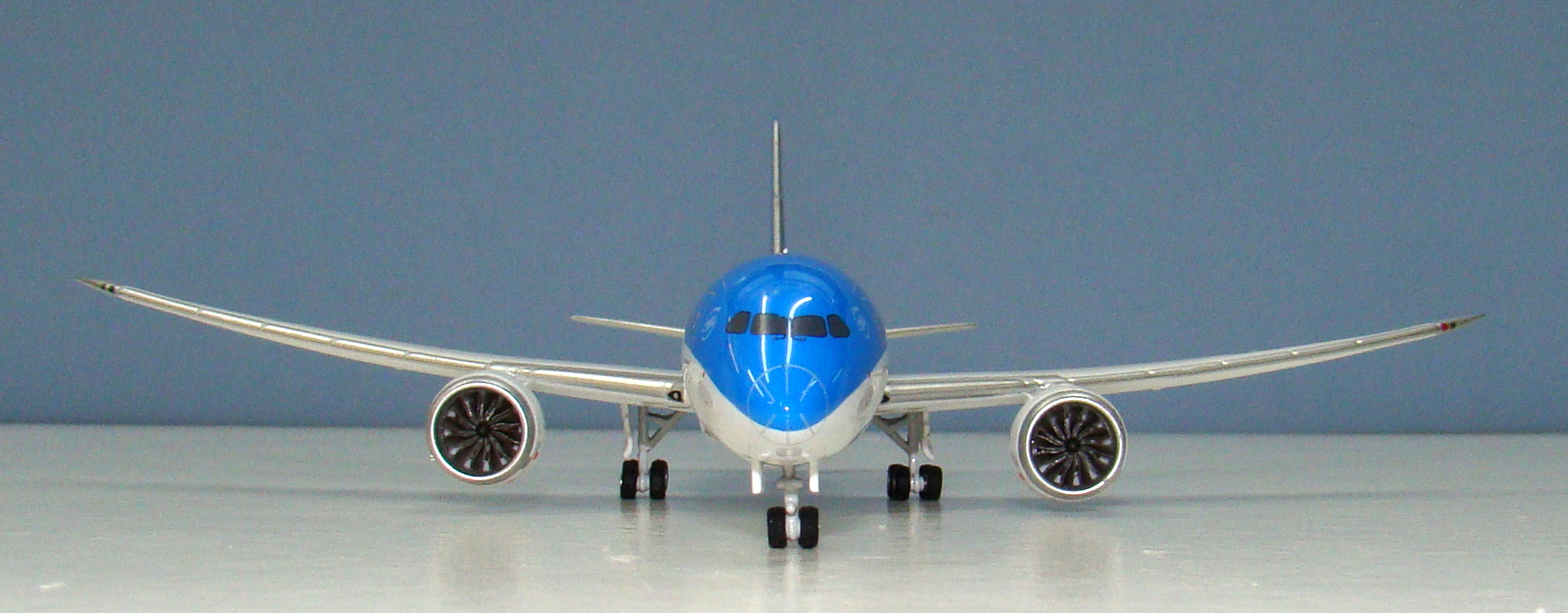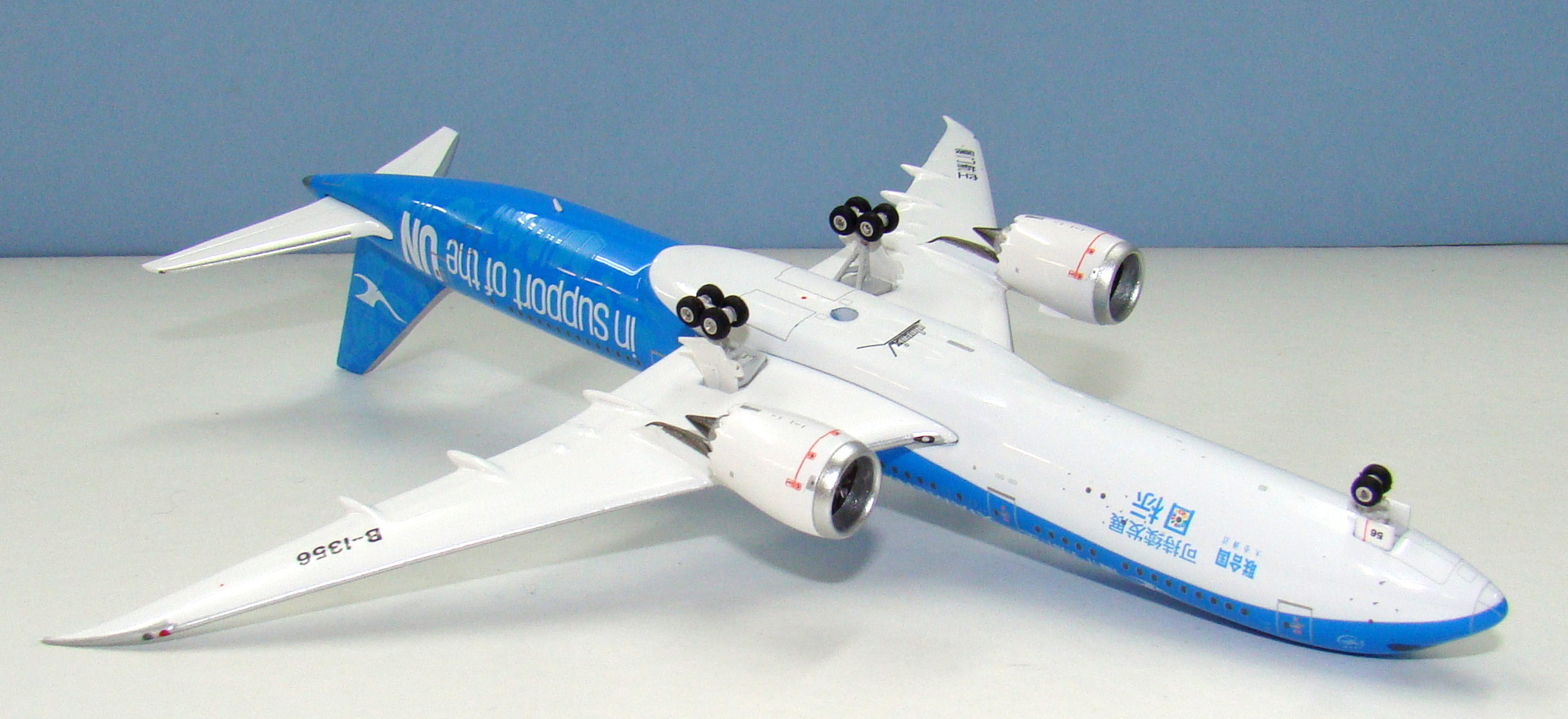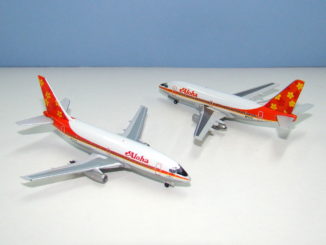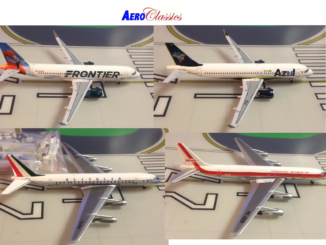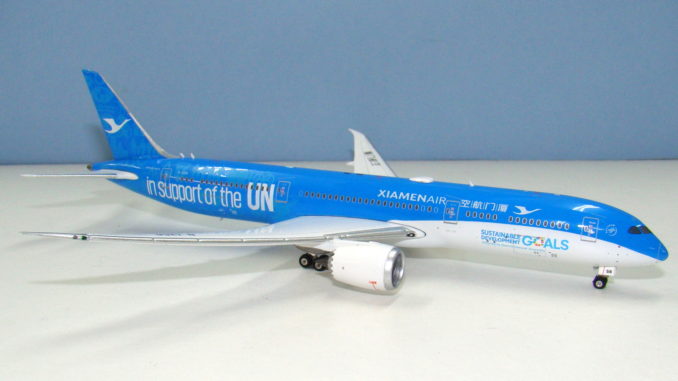
Almost every Chinese airline has multiple special liveries of one kind or another in their fleet advertising a wide range of different places and items – cities, theme parks, cartoon characters, events and even chocolate bars all feature. This must be a boon for the Chinese-centric 1:400 manufacturers who quickly pounce on the latest special scheme. This aircraft only entered service in March but has already been announced by both JC Wings and Phoenix with predictably the latter being first to market.
THE REAL THING

Xiamen Airlines continues to be a well run and profitable Chinese airline in the second tier of Chinese carriers and nowadays under the wing of the China Southern group. Since August 2014 they have been building up a small fleet of 787s, which is now equally split between the shorter series 8 and the middle series 9. The first 787-9 was delivered in December 2016 but the last two of the six were delivered only a day apart on March 15 and 16, 2018. These are the last pair of 787-9s on order.
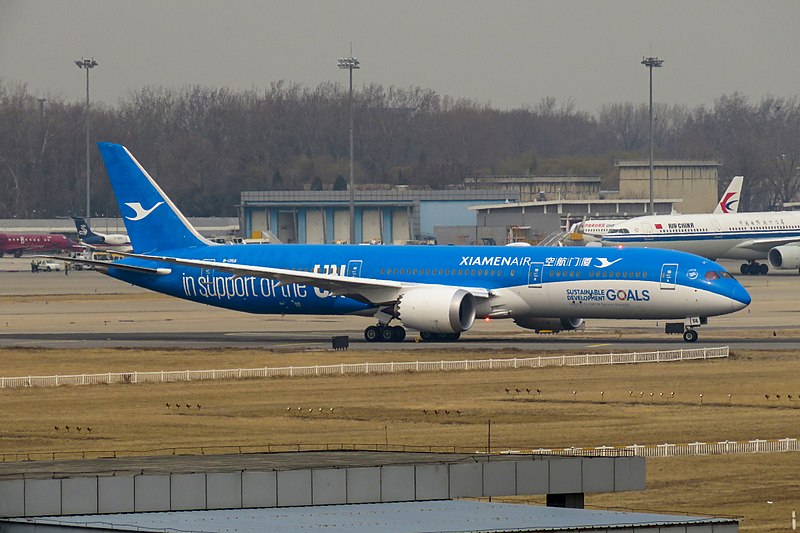
B-1356, the last 787, was delivered in a special scheme advertising the airline’s partnership with the United Nations, which it signed in February 2017. It is the first airline to work with the UN on the theme of sustainability, something that Boeing China was keen to parrot when it’s President said:
“The super-efficient Dreamliner is a perfect match of the sustainable development approach of today’s world,” Congratulations to our long term partner Xiamen Airlines for taking this special 787, but more importantly for being the great corporate citizen in our industry.”
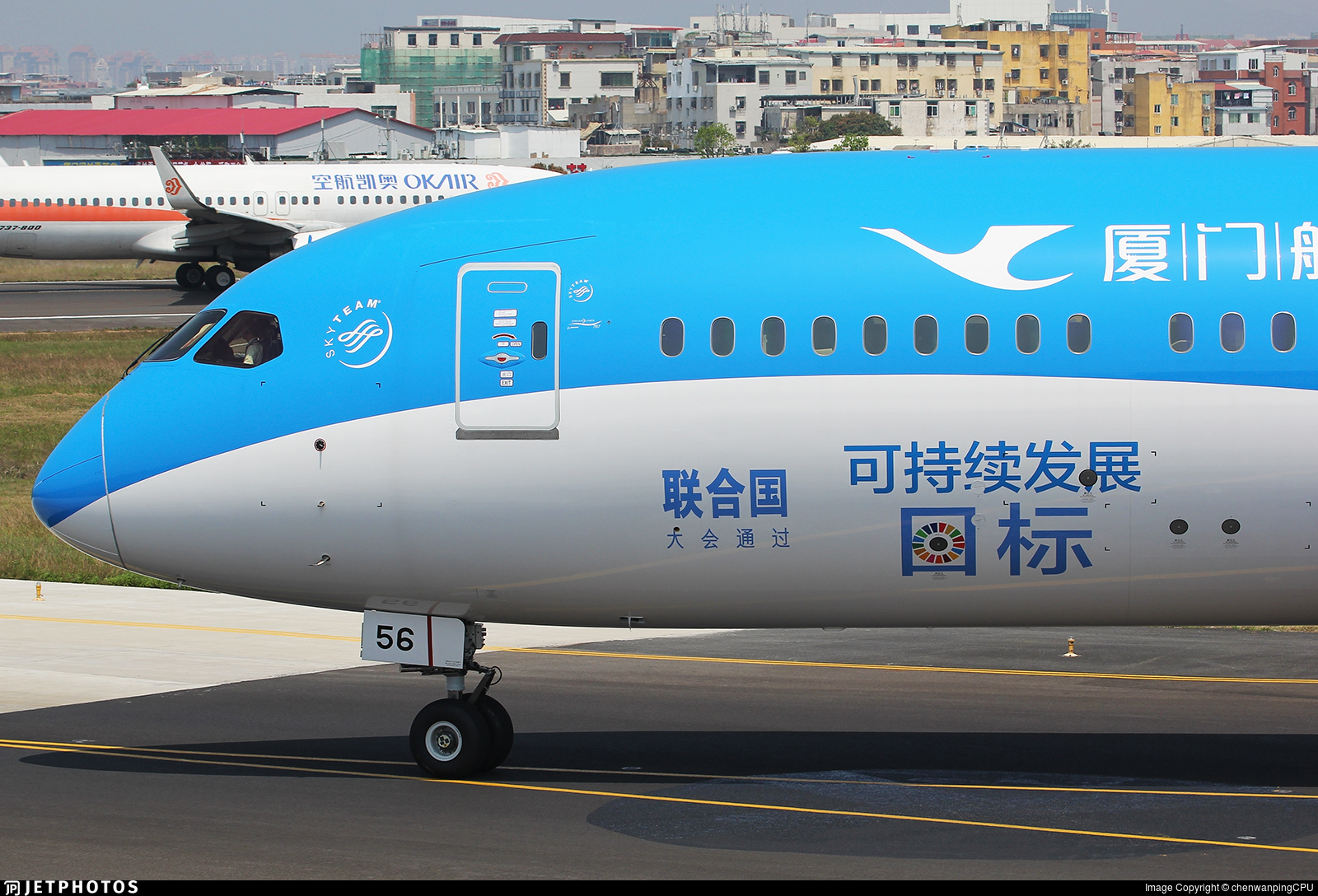
Initially the aircraft will be used on the obvious Xiamen-Beijing sector but after a few months it will be switched to international services. Currently Xiamen only flies the 787-9 regularly to Los Angeles (6 flights a week) from Xiamen and New York JFK (3 times weekly) from Fuzhou. Both these routes are served only by Xiamen fitting the one route, one airline policy China had maintained until recently.
The 787-9s are fitted in a 287 seat two class configuration, unlike their three class 237 seater 787-8s. The 30 business class seats are all in a reverse herringbone layout providing a very attractive product for business travellers. Undoubtedly as Xiamen grows its international reach the 787-9s will be seen at more destinations matching both the UN’s and Xiamen’s sustainable development goals.
THE MODEL
The format for my reviews is to split them into three key areas:
- The mould of the aircraft
- The paint and livery
- Printing and quality control
Each can get a maximum score of 10 for a section giving a maximum combined total score of 30.
THE MOULD
It has been more than a year since I last reviewed a Phoenix 787. At the time I thought the mould was good but quite inferior to the JC Wings offering. The mould remains essentially the same aside from one change and so the Phoenix 787 remains for me a passable but far from perfect moulding.
On the plus side the shape of the major components is essentially correct so that the nose, wings, vertical stabilizer and most of the fuselage are very good. The horizontal stabilizers still sit too level and the tailcone is not blunt enough but these are minor criticisms.
The wing fuselage join and under fuselage middle are a weakpoint. The rear wing join is flush and not accurate as it lacks the fuselage strake. On the underside the mould lacks almost all detail. This is most obvious in the lack of moulded in (or printed on) intakes at the front of the wing/body fairing.
The area above the wing on the Phoenix mould is slab sided and does not show the curvature present on the real thing and is therefore again incorrect. On the plus side the front fuselage, nose, satnav dome and antennae are all well done. The wings themselves also have an unnatural curvature towards the tip, which is too strong for an on the ground look.

The big change for the mould is that it has been updated with Phoenixes new see through and rotating fanblades inside the engines. These actually look very good although I can’t think of a time when I’m going to be rotating the blades it can be done. The engines themselves do however rather lack ground clearance (probably due to the shape of the engine pylon upper surface) and the forward rims are still not deep enough. Overall it is an improvement over the previous solid engines but not a major one.
The landing gear on this model is definitely shorter than that on the previous All Nippon example I reviewed, which is more accurate but of course doesn’t help ground clearance for the engines.
Despite the improved engines and better wheelhubs the Phoenix 787 is still inferior to the JC Wings mould due to the fuselage / wing area and tail cone / horizontal stabilizers. Nonetheless it is still a reasonably decent mould and one of Phoenixes better offerings.
SCORE – 6
PAINT & LIVERY
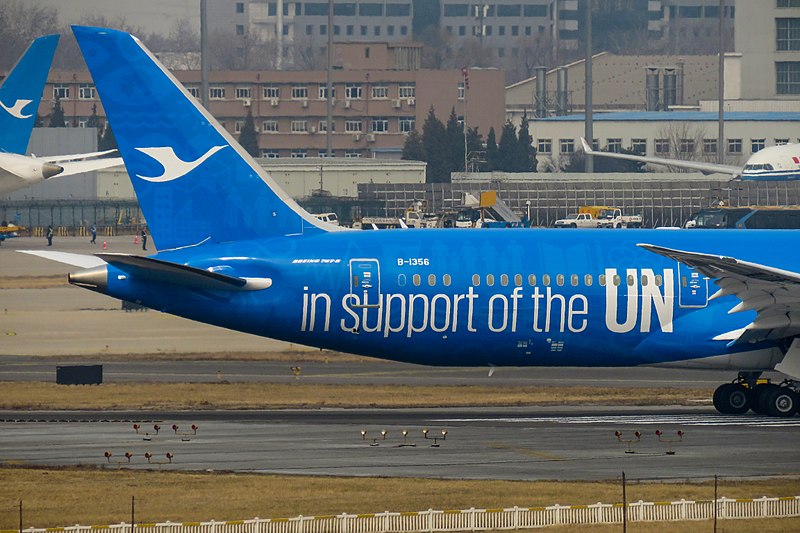
This special livery is the sort of complex and intricate design that is now not only possible in real life but also thankfully in 1:400 scale also. At first it looks like a mainly blue body with a wavy lower edge but in close up you can see that the entire rear fuselage is covered with various lighter blue items. These include a sun, a steaming bowl of soup, a peace dove, high rise buildings, books, fish, a globe, a graph, a family, a cup of water and various other symbols no doubt designed to resonate the themes of sustainability the UN is aiming for. The livery is therefore very detailed and not even symmetrical – having different image placement on either side.
In overcast scenes the blue can look quite dark but in reality it is quite light and Phoenix have made a good approximation of it in my opinion. The placement of the major livery elements is good but not faultless. The large ‘in support of the UN’ and smaller forward sustainable development goal titling is correctly placed and uses the right font. The pathway of the lower blue wave edge however is less good. Starting well at the nose it intersects with the wing too far backwards and I get the feeling this is one of the times when the incorrect shape of the mould at the wingroot impact the position of a livery element. The blue should hit the wing just aft of its leading edge, looking at the starboard under the E of XIAMEN not under the I in XIAMEN. It is miles out but doesn’t significantly mar the result unless you compare it to photos.
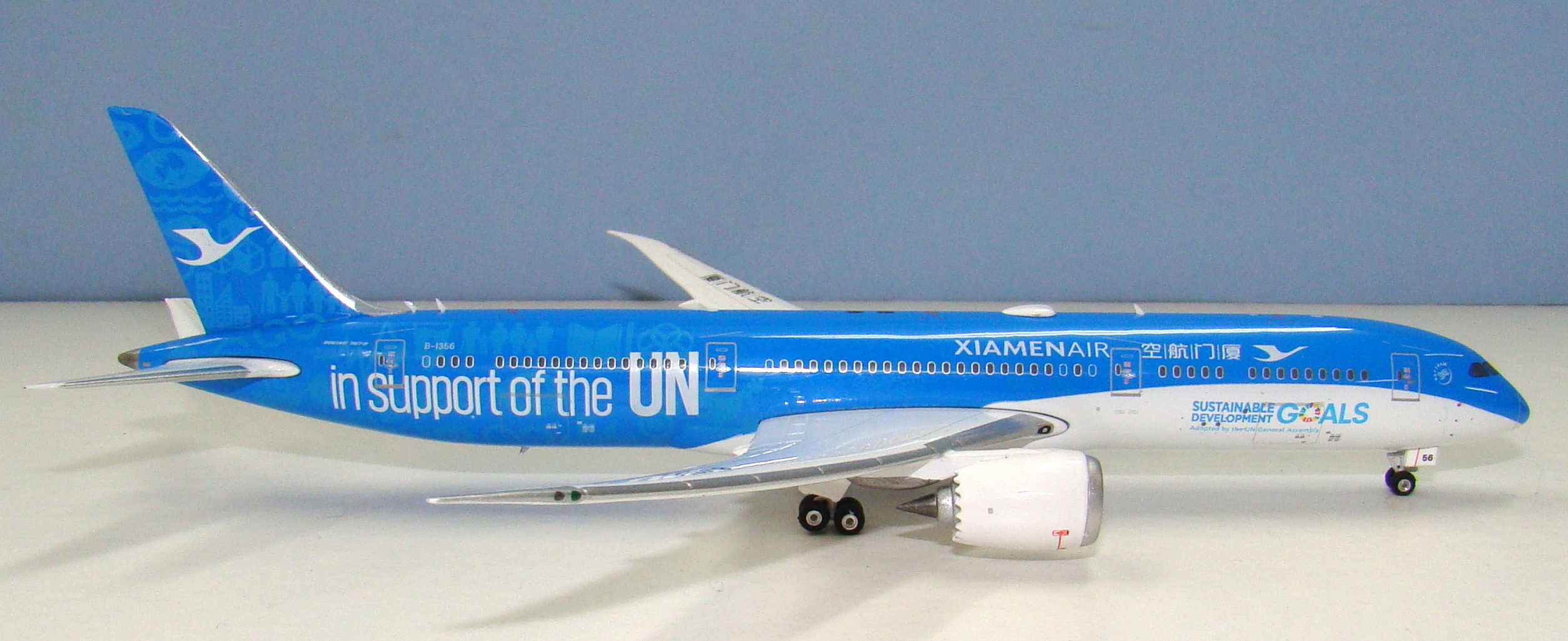
The printing of the individual icons across the rear fuselage and tail is faultless and the radomes and aerials are correctly white not blue.
SCORE – 8
PRINTING & QUALITY CONTROL
It is almost unheard of to acquire a Phoenix model with no quality faults and yet here one is. There aren’t even any tyre tabs on this model whilst the radomes and aerials are well fitted and the new multi-piece engines are also put together effectively.
Unfortunately the printing isn’t quite as good, indeed it is a weakspot of Phoenix models in general. There are no quality issues with the printing however in my opinion the entry doors are too short all the way along the fuselage. It is a little curious as they do seem short on the real thing but not I feel quite this short.

Printing is otherwise fine where it exists, which to be fair is most of the places it is needed including the nosecone and the leading edge of the tail and underside of the engine nacelles. Nonetheless it is curious that seeing as the mould doesn’t have them on it that the large ventral intakes are not printed on.
SCORE – 8
CONCLUSION
This is actually a decent model from Phoenix but a combination of minor issues means it gets a workmanlike total score. That however shouldn’t detract from a nice model that could have quite easily been a trainwreck. Phoenix can make well constructed models with good liveries and printing as this model shows but nowadays even then they don’t elevate themselves to the same heights as some of the competition, especially as the moulds being used are weak in comparison.
FINAL SCORE – 22/30



